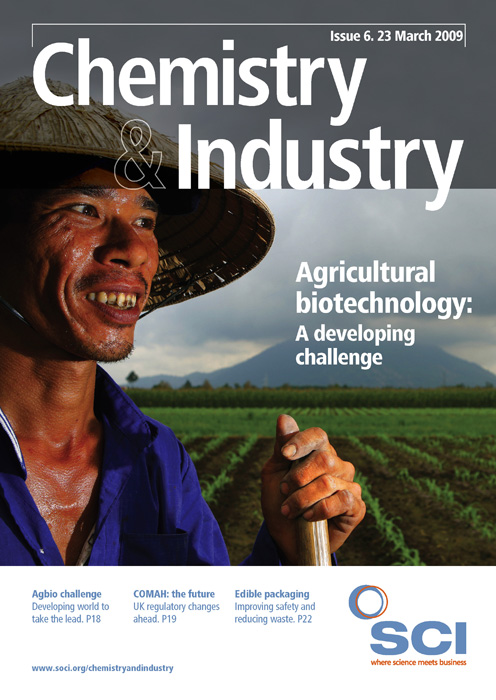Laura Bingham from Kirbie Kendal School in Cumbria already has a patent pending on her improved gas diffusion layer (GDL) device for fuel cells, developed while working on a summer project at local firm Technical Fibre Products. The role of the GDL is to transport hydrogen for conversion to protons and electrons at the fuel cell anode, Bingham explains. In tests comparing the conductivity of her carbon nanofibre GDL with nonnanofibre versions, she claims to have observed transportation rates two to three times higher. Because of the efficiency of the nanofibre GDL, she says it should be possible to shrink her device to half the size of conventional ones thanks to greater efficiencies, which should prove useful for making smaller fuel cells.
Exact details are still under wraps, but a US company has already expressed interest in the idea, Bingham says. ‘It should not be much more expensive [than conventional GDLs] because the amounts of nanofibres are minimal to get the effect.’
Mathew Smith of Wirral Grammar School for Boys spent his summer placement at Liverpool John Moores University, developing alternative methods of synthesising potential malaria drugs using microwaves. Smith has made four novel bisquinoline compounds, similar in structure to the malaria drug chloroquine, which has problems with resistance.
Using microwaves, Smith says he can make the compounds in as little as 20 minutes, compared with three days using standard bench methods. The process is also safer and more controllable and does not need to be carried out in a fume cupboard. The new drugs have already been sent for preclinical tests in Thailand and seem to have good activity, he says.
The ultimate goal would be to develop cheaper malaria drugs – costing less than 10p/dose/person – for use in developing countries, although he says an actual drug based on the idea is still at least five years away. John Moores researchers meanwhile, have also developed a gel formulation of the compounds that could be useful in a patch for comatose people or those otherwise unable to take conventional drugs. A paper on the work has been submitted for publication.
Hannah Johnston from Wreake Valley Community College, has worked with AstraZeneca to explore the potential of enzymes from carrots, mung beans and parsnips for transforming prochiral ketones to chiral alchohols. To date, Johnston has used the enzymes to make a series of simple chiral alcohols, in enantiomeric excesses of up to 99.5% using carrot enzymes. ‘Parsnips and mung beans also produce an almost enantiomerically pure product,’ Johnston says, although she notes that one of the major drawbacks is the time-consuming reaction, which can take 24h to complete. Future work could involve investigating different vegetables to see if these yield different enantiomers. She would also like the opportunity to try out the enzymes on one of the pro-chiral ketones AstraZeneca is currently interested in as part of its drug discovery programme.
Two other chemistry projects presented at the fair looked at a visual method for assessing ‘drug wettability’ (Rachel Harris, Hertfordshire and Essex High School) and research results showing the cause of catalyst deactivation at a Davy Process Technology reactor (Thomas Stefan Carnell, Bede College).
The overall winners were Peter Hatfield, Simon Langton Grammar School for Boys, who was named UK Young Scientist of the Year and Chris Jefferies, Pershore High School, who won the UK Young Technologist of the Year prize. Hatfield’s project was inspired by a visit to CERN, Switzerland, where he came up with the idea of using the chips used by one of the Large Hadron Collider’s detectors to study cosmic rays produced by the sun. The LUCID cosmic ray detector that was consequently developed will be sent into space on an SSTL satellite in 2010.
Jefferies project, completed in collaboration with two other students, with UK company Allen Gears led to the development of a technique to accurately measure the distance between a probe and gears. These probes measure vibrations to ensure that gears are correctly aligned, but can easily be damaged if they touch the gears. Jefferies’ system uses magnetic eddies, created by an electromagnetic coil, to measure the probe’s distance from the gears, which is then digitally displayed in microns. This system has resulted in savings of £2000 for the company.





